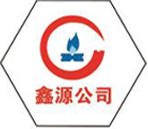
8 月 . 08, 2024 15:55
Back to list
Understanding the Functionality and Importance of Natural Gas Pressure Regulation Devices in Industry
Understanding Natural Gas Pressure Reducers
Natural gas is a critical energy source used in homes and industries worldwide. It is delivered through a complex distribution system that ensures it reaches consumers at the appropriate pressure levels for safe and efficient use. One of the key components in managing the pressure of natural gas is the pressure reducer, a device designed to regulate and control the pressure at which gas is delivered to end-users. This article explores the function, importance, and types of natural gas pressure reducers.
Function of Pressure Reducers
The primary role of a natural gas pressure reducer is to lower the high pressure of natural gas supplied from pipelines or storage facilities to a safer, usable level for appliances and equipment. High-pressure gas can be dangerous and inefficient; thus, pressure reducers function to ensure that the gas pressure conforms to the specifications required by various applications, ranging from residential heating systems to industrial burners.
Pressure reducers operate by allowing gas to flow through a chamber where the pressure is mechanically reduced. They feature internal components such as diaphragms, springs, and valves that work together to adjust gas pressure. When the pressure of the incoming gas exceeds the setpoint, these components react to limit the tension and maintain an output pressure that meets regulatory standards.
Importance of Pressure Regulators
The importance of natural gas pressure reducers cannot be overstated. Firstly, they enhance safety by preventing excessive pressure that could lead to leaks, explosions, or damage to appliances. By controlling pressure effectively, these devices mitigate risks associated with high-pressure gas systems.
Secondly, pressure reducers contribute to operational efficiency. By ensuring that gas is delivered at the correct pressure, they enhance the performance of appliances, allowing them to operate as intended. For example, many gas-fired heating systems are designed to function optimally at specific pressures; if the pressure fluctuates outside these parameters, it may result in inefficient operation, increased costs, or potential system failure.
Lastly, regulatory compliance is a crucial aspect of using pressure reducers. Natural gas utilities are obligated to follow strict safety and operational guidelines established by governing bodies. Properly functioning pressure reducers are essential to achieving compliance with these regulations, ensuring reliable operation, and safeguarding user safety.
natural gas pressure reducer

Types of Natural Gas Pressure Reducers
There are several types of natural gas pressure reducers, each designed for specific applications and pressures. The most common types include
1. Single-Stage Pressure Reducers These are typically used in low-pressure applications. They provide a single reduction stage and are straightforward in their function, making them suitable for residential heating systems or small industrial uses.
2. Two-Stage Pressure Reducers Ideal for situations where incoming pressure fluctuates widely, two-stage reducers use two separate mechanisms to manage pressure more effectively. They first reduce incoming pressure to an intermediate level before further reducing it to the desired working pressure.
3. Commercial and Industrial Pressure Regulators These are designed for larger-scale applications and robust enough to handle significant variations in pressure. They are commonly installed in industrial settings where large volumes of gas are used.
4. Electronic Pressure Regulators Incorporating advanced technology, these regulators can automatically adjust to changing flow rates and pressures, offering enhanced control and efficiency. They are increasingly used in modern systems that require precise pressure management.
Conclusion
Natural gas pressure reducers are vital components that ensure the safe, efficient, and reliable delivery of natural gas to users. By regulating pressure, they protect systems from the hazards of high pressure, improve operational efficiency, and help maintain compliance with safety regulations. Understanding the types and functions of these devices allows consumers and industries to make informed decisions about their natural gas systems, ultimately leading to safer and more efficient energy use.
Latest news
-
Unlocking The Quality Gas Pressure ReducersNewsNov.01,2024
-
The Role of Gas Pressure Reducing StationsNewsNov.01,2024
-
The Importance and Functionality of Safety Relief ValvesNewsNov.01,2024
-
The Essential Role of Safety Valves in Natural Gas ApplicationsNewsNov.01,2024
-
The Essential Role of Gas Pressure RegulatorsNewsNov.01,2024
-
Enhance Your Premium Gas FiltersNewsNov.01,2024

